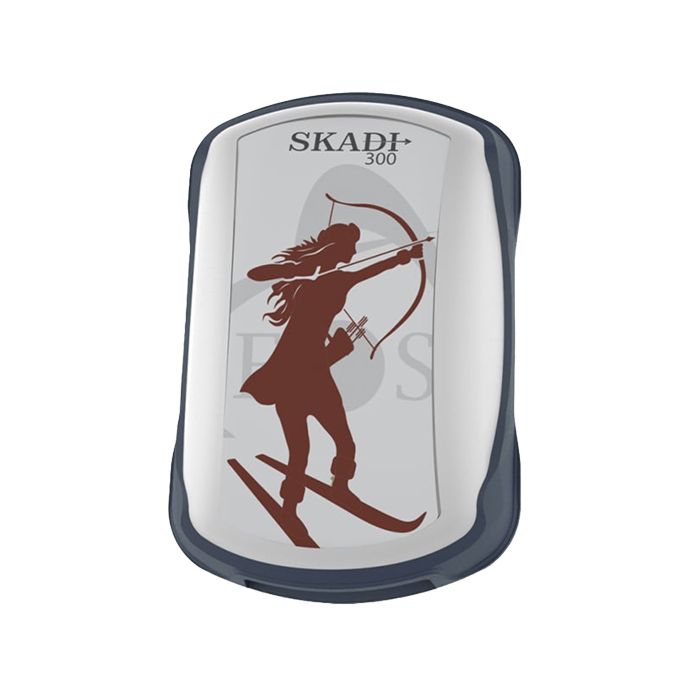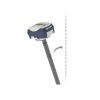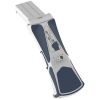Eos Skadi 300 RTK GNSS Receiver
Features
- Works with SBAS, RTK networks, and Atlas subscriptions
- Optional Skadi Tilt Compensation captures points quickly without having to level a survey range pole
- Compatible with Skadi Smart Handle for Invisible Range Pole and Extensible Virtual Range Pole features
- Free ground shipping
- Expedited repair and warranty service
- Lifetime technical support
- More
Overview
The Skadi 300 is an extremely robust RTK GNSS receiver in the Skadi Series from Eos Positioning Systems. With support for all GNSS constellations, triple-frequency, and most GNSS signals, the Skadi 300 lets you obtain a unique blend of accuracy and performance in the field. The Skadi 300 includes the popular SafeRTK feature for retaining your survey-grade accuracy when you temporarily lose internet connectivity to your source of RTK corrections. Additionally, you can use any RTK network, CORS network, base station, SBAS, and subscription Atlas correction services with the Skadi 300. It is also device agnostic to work with any iOS, Android, or Windows mobile device. In addition to the accuracy and performance features you would expect from an Eos GNSS receiver, the Skadi 300 includes additional advanced mapping capabilities available only in the Skadi Series product line. This includes Skadi Tilt Compensation so you can remain more productive at every point by not having to level your physical range pole. It also includes an integrated antenna and hot-swap, all-day battery to support any field mounting configuration (e.g., handheld setup, range pole, backpack).
Moreover, the Skadi 300 may be optionally upgraded to include the Skadi Smart Handle from the standard handle. Thanks to cutting-edge LiDAR and MEMS sensor, the Skadi Smart Handle offers a unique Invisible Range Pole feature to provide you with continuous elevation measurements to the ground. Meanwhile, a second feature of the Skadi Smart Handle, the Extensible Virtual Range Pole, lets you remotely capture short-distance assets on the ground and in trenches.
Skadi Tilt Compensation
When you activate Skadi Tilt Compensation, you eliminate the need to level your antenna while performing RTK data collection on a range pole. With Skadi Tilt Compensation activated, you introduce only .3 mm (.01 inch) of inaccuracy per degree of tilt.
Skadi Smart Handle
The Skadi Smart Handle is a physical upgrade to your included Skadi Standard Handle. The smart handle features two exciting and powerful features. These features include the following:
Invisible Range Pole
The Invisible Range Pole is an innovative approach to bringing the benefits of a traditional survey range pole into your hand without the cumbersome physical weight. With the Invisible Range Pole feature, you carry a virtual gimbal that keeps you plumb to the ground. Raise, lower, or tilt the receiver, your elevation to the ground is continuously computed below the Skadi receiver in your hand, thanks to the exciting combination of LiDAR and MEMS technologies.
Extensible Virtual Range Pole
This exciting and innovative feature allows you to extend the reach of your data collection beyond the position you physically occupy. Using a built-in green laser pointer, now you can “shoot” short-distance assets on the ground while retaining high accuracy. This is particularly useful for assets in trenches and similar environments. The Extensible Virtual Range Pole has an approximate range of about seven meters (23 feet) in bright sunlight conditions (performance may vary based on target reflectivity).
- Skadi 300 GNSS Receiver with Integrated Antenna
- Pole Mounting Plate for Skadi Series
- Skadi Standard Handle (upgradable to Skadi Smart Handle)
- Phone Mounting Bracket for Skadi Series Handles
- Tablet Mounting Bracket for Skadi Series Handles
- Skadi Series Li-Ion Battery Pack
- USB-C Power Block
- USB-C Cable
- Skadi Series Hardshell Case
In The News









































